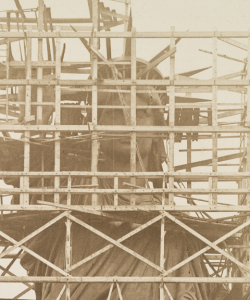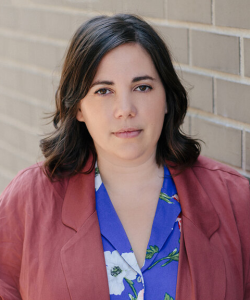Craft Capsule: Doors vs. Corridors

The author of RENDANG imagines poetry as a house with many corridors.
Jump to navigation Skip to content
In our weekly series of craft essays, some of the best and brightest minds in contemporary literature explore their craft in compact form, articulating their thoughts about creative obsessions and curiosities in a working notebook of lessons about the art of writing.

The author of RENDANG imagines poetry as a house with many corridors.

The author of Horsepower recalls the tricks that helped her revise and assemble her collection.

The author of Horsepower reimagines the bildungsroman to honor the narrative arc of Black childhood.

The author of Horsepower examines and resists the racism and subconscious anxieties that infect the U.S. literary imagination.

The author of Horsepower suggests putting aside knowledge and focusing on unlearning.

The author of This Is One Way to Dance resists genre limitations and seeks her own unique form.

The author of This Is One Way to Dance reflects on using fragments to build a larger structure.

The author of This Is One Way to Dance considers the consonances and dissonances between dance and writing.

The author of This Is One Way to Dance shares how notes—footnotes, codas, prologues, corrections—figure into her writing process.

The author of The Prettiest Star shares strategies and questions that help him get to know his characters.

The author of The Prettiest Star celebrates the magic of minor characters.

The author of The Prettiest Star explores a variety of archives to help him capture the specific spirit and look of the eighties.

Carter Sickels recalls the challenges of juggling multiple first-person narrators in his novel The Prettiest Star.

The author of The Prettiest Star recommends keeping a novel-dedicated notebook for ideas, research, and informal experiments.

The author of the novel The Prettiest Star shares an exercise to help you approach your manuscript from a new angle.

Emma Copley Eisenberg finds inspiration on the open road, driving more than ten thousand miles in three months.

Emma Copley Eisenberg borrows a creative exercise from beloved writer and comics artist Lynda Barry.

“You ask the right person the right question at the right time, and they’ll tell you something that has never before been told in the history of the world.” Emma Copley Eisenberg celebrates the magic of reporting as a research tool.

Emma Copley Eisenberg remembers her introduction to the tarot and shares how the cards became an integral part of her writing process.

Feeling stuck with a work-in-progress? Mimi Lok suggests changing up an element that previously felt off limits.

“It’s important to understand why the characters are writing to each other, what kind of language is particular to them, and what the form reveals or hides.” Mimi Lok contemplates the challenges and rewards of the epistolary form.

“Meditation is not a quick fix,” writes Mimi Lok. “It requires practice so that the mind gets used to stilling and quieting itself enough to listen.” In this Craft Capsule, Lok offers her method for cultivating stillness and silence.

“What needs to start? What needs to stop? What needs to change?” Mimi Lok shares an exercise that helps her persevere through difficult writing projects.

How do you know when to stop revising? Cameron Awkward-Rich shares a memorization exercise that helps him recognize when a poem is done.

Cameron Awkward-Rich weighs the ethical demands of elegy.